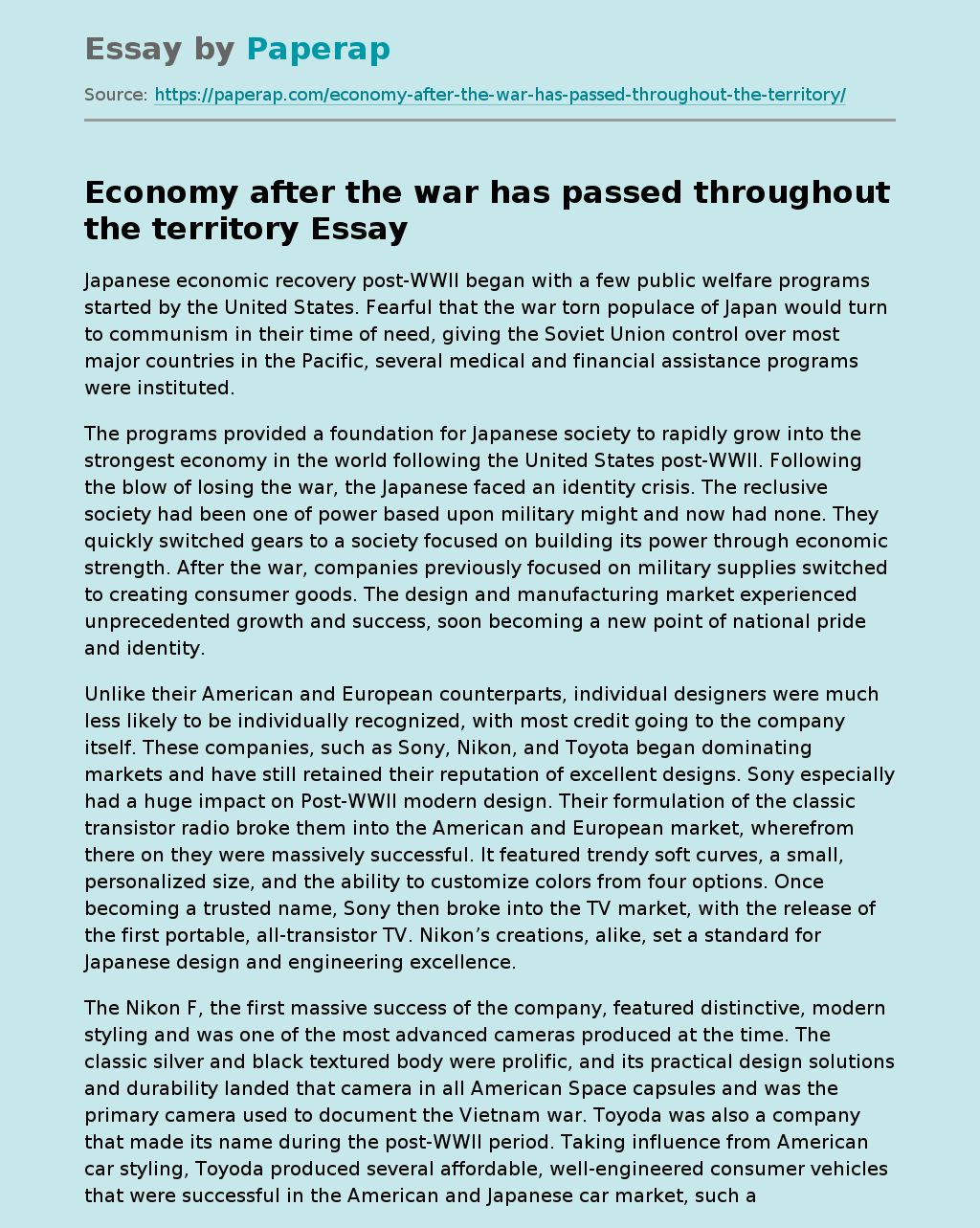Economy after the war has passed throughout the territory
Japanese economic recovery post-WWII began with a few public welfare programs started by the United States. Fearful that the war torn populace of Japan would turn to communism in their time of need, giving the Soviet Union control over most major countries in the Pacific, several medical and financial assistance programs were instituted.
The programs provided a foundation for Japanese society to rapidly grow into the strongest economy in the world following the United States post-WWII. Following the blow of losing the war, the Japanese faced an identity crisis.
The reclusive society had been one of power based upon military might and now had none. They quickly switched gears to a society focused on building its power through economic strength. After the war, companies previously focused on military supplies switched to creating consumer goods. The design and manufacturing market experienced unprecedented growth and success, soon becoming a new point of national pride and identity.
Unlike their American and European counterparts, individual designers were much less likely to be individually recognized, with most credit going to the company itself.
These companies, such as Sony, Nikon, and Toyota began dominating markets and have still retained their reputation of excellent designs. Sony especially had a huge impact on Post-WWII modern design. Their formulation of the classic transistor radio broke them into the American and European market, wherefrom there on they were massively successful. It featured trendy soft curves, a small, personalized size, and the ability to customize colors from four options. Once becoming a trusted name, Sony then broke into the TV market, with the release of the first portable, all-transistor TV.
Nikon’s creations, alike, set a standard for Japanese design and engineering excellence.
The Nikon F, the first massive success of the company, featured distinctive, modern styling and was one of the most advanced cameras produced at the time. The classic silver and black textured body were prolific, and its practical design solutions and durability landed that camera in all American Space capsules and was the primary camera used to document the Vietnam war. Toyoda was also a company that made its name during the post-WWII period. Taking influence from American car styling, Toyoda produced several affordable, well-engineered consumer vehicles that were successful in the American and Japanese car market, such as the Model SA. It featured popular themes of post-war modern car design; a streamlined, dual-toned body, soft curves, and classic chrome details. These companies’ successes were indicative of a huge cultural change in Japan. The designs helped shape modern design and made the term “Made in Japan” a stamp of quality and innovation.
Economy after the war has passed throughout the territory. (2021, Dec 03). Retrieved from https://paperap.com/economy-after-the-war-has-passed-throughout-the-territory/

